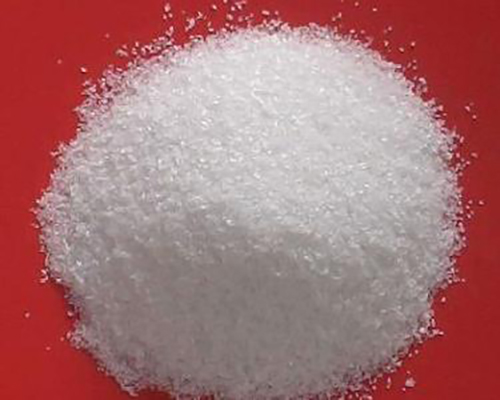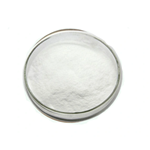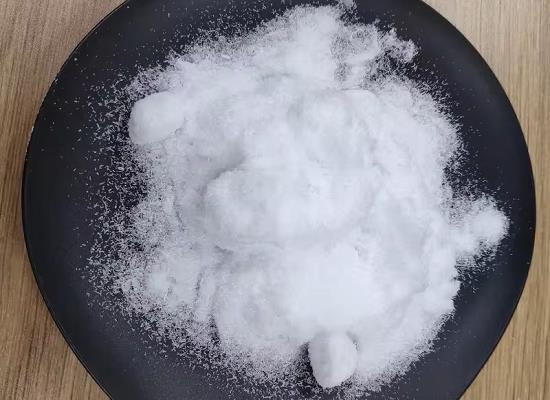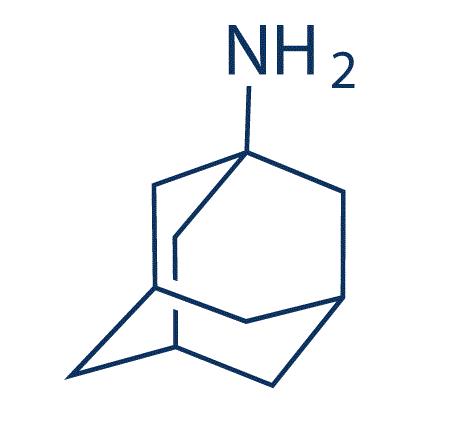The synthetic methods of hydroxylamine hydrochloride
Introduction
Hydroxylamine hydrochloride is an inorganic substance[1], a colorless crystalline, easily deliquescence, white chemical substance, mainly used as a reducing agent and an imaging agent, used in the preparation of oximes in organic synthesis, and also used in the synthesis of anticancer drugs (hydroxylamine hydrochloride). urea), sulfonamides (trimoxazole) and pesticides (methomyl). It has strong hygroscopicity and will decompose when it is damped above 151℃. At 17°C, 83.8g can be dissolved in 100g of water. This product is highly toxic and irritating to the skin. The production equipment should be sealed to prevent running, running, dripping and leaking, and operators should wear protective equipment. When splashed on the skin, rinse with plenty of water.

Picture 1 Hydroxylamine hydrochloride powders
Applications of Hydroxylamine Hydrochloride
This product is mainly used as reducing agent and imaging agent. It is used to prepare oxime in organic synthesis. It is also used as raw material for synthesizing anticancer drugs (hydroxyurea), sulfa drugs (trimoxazole) and pesticides (methomyl). It is used as a depolarizer in electroanalysis, as a non-coloring short-term stop agent in the synthetic rubber industry, etc. The pharmaceutical industry is used as an intermediate for sulfamethoxazole. Synthetic dye industry is used for the preparation of isatin intermediates. The oil industry is used as an antioxidant and antioxidant for fatty acids and soaps. In analytical chemistry, it is used as a reducing agent for the analysis of formaldehyde, furfural, camphor and glucose. Depolarizers in electrochemical analysis. It is also used for the determination of magnesium components in iron and steel, the trace analysis of sulfonic acid and fatty acid, and as a depolarizer in the inspection and analysis of aldehydes and ketones. In addition, it is also used for printing and printing of color films. Used as a viscosity modifier, adding 0.15% of hydroxylamine hydrochloride in the concentrated natural latex can block the aldehyde group in the rubber molecule, so that it will no longer have a condensation reaction with the aldehyde group of other rubber molecules, which can avoid cross-linking. The problem of increasing Mooney viscosity arises, and a constant viscosity latex is obtained. Also used as a short term terminator for synthetic rubber.
The synthetic method of hydroxylamine hydrochloride
Sodium nitrite synthesis method (oximation method) Add water to the reaction kettle, add sodium nitrite under stirring, add sodium metabisulfite in stages, and then acidify with sulfuric acid. The acidified material is sent to the hydrolysis kettle, acetone is added, neutralized with liquid caustic soda, and the neutralized liquid is distilled to obtain acetone oxime. Acetone oxime and hydrochloric acid are added to the salt-forming kettle for reaction to generate hydroxylamine hydrochloride and acetone. Acetone is recovered and used; hydroxylamine hydrochloride is concentrated, crystallized by cooling, centrifuged and dried to obtain the finished product. Raw material consumption quota: sodium nitrite (95%) 1970kg/t, sodium metabisulfite (64% as SO2) 5418kg/t, acetone (98%) 1175kg/t. 2. Nitromethane method Nitromethane reacts with hydrochloric acid and water to obtain hydroxylamine hydrochloride. According to HGB3044-76, the hydroxylamine hydrochloride product is white crystal, the content of the second-grade product is ≥98.5, and the content of the third-grade product is ≥97%. Raw material consumption quota: nitromethane 1200kg/t, hydrochloric acid (30%) 1500kg/t. Or by the action of nitromethane with hydrochloric acid and water to obtain hydroxylamine hydrochloride.
Dissolve sodium nitrite in water, cool down to 0°C, add sodium bisulfite and 35% to 40% dilute sulfuric acid to make the solution pH=2, add acetone when the temperature rises to 35°C, stop stirring, and keep the temperature up to 70°C for 3h , cooled to 30 ℃, and sodium hydroxide solution was added to pH 7-8. The acetone oxime was evaporated by heating, hydrochloric acid was added, the temperature was maintained at 55-60°C, the temperature was maintained for 12 hours, and then concentrated. After a little cooling, decolorize, filter, then concentrate, cool, and crystallize to get the finished product. Refining can take ethanol soaking or water recrystallization.
Reference
1 Zhao H, Heindel N D. Determination of degree of substitution of formyl groups in polyaldehyde dextran by the hydroxylamine hydrochloride method[J]. Pharmaceutical research, 1991, 8(3): 400-402.
Related articles And Qustion
See also
Lastest Price from Hydroxylamine hydrochloride manufacturers

US $20.00-10.00/kg2025-11-03
- CAS:
- 5470-11-1
- Min. Order:
- 20kg
- Purity:
- 99%
- Supply Ability:
- 1200tons

US $10.00/ASSAYS2025-05-04
- CAS:
- 5470-11-1
- Min. Order:
- 1ASSAYS
- Purity:
- 99%
- Supply Ability:
- 100kg



